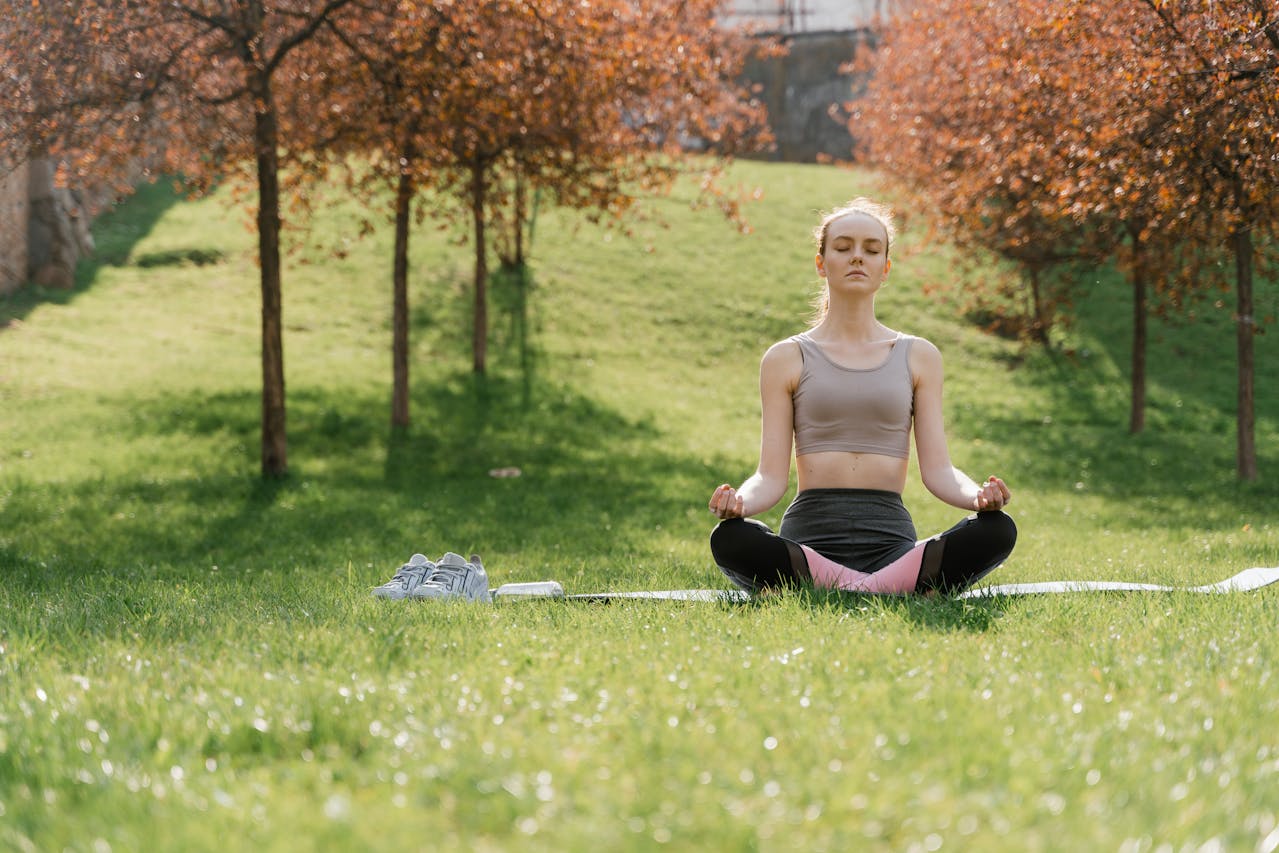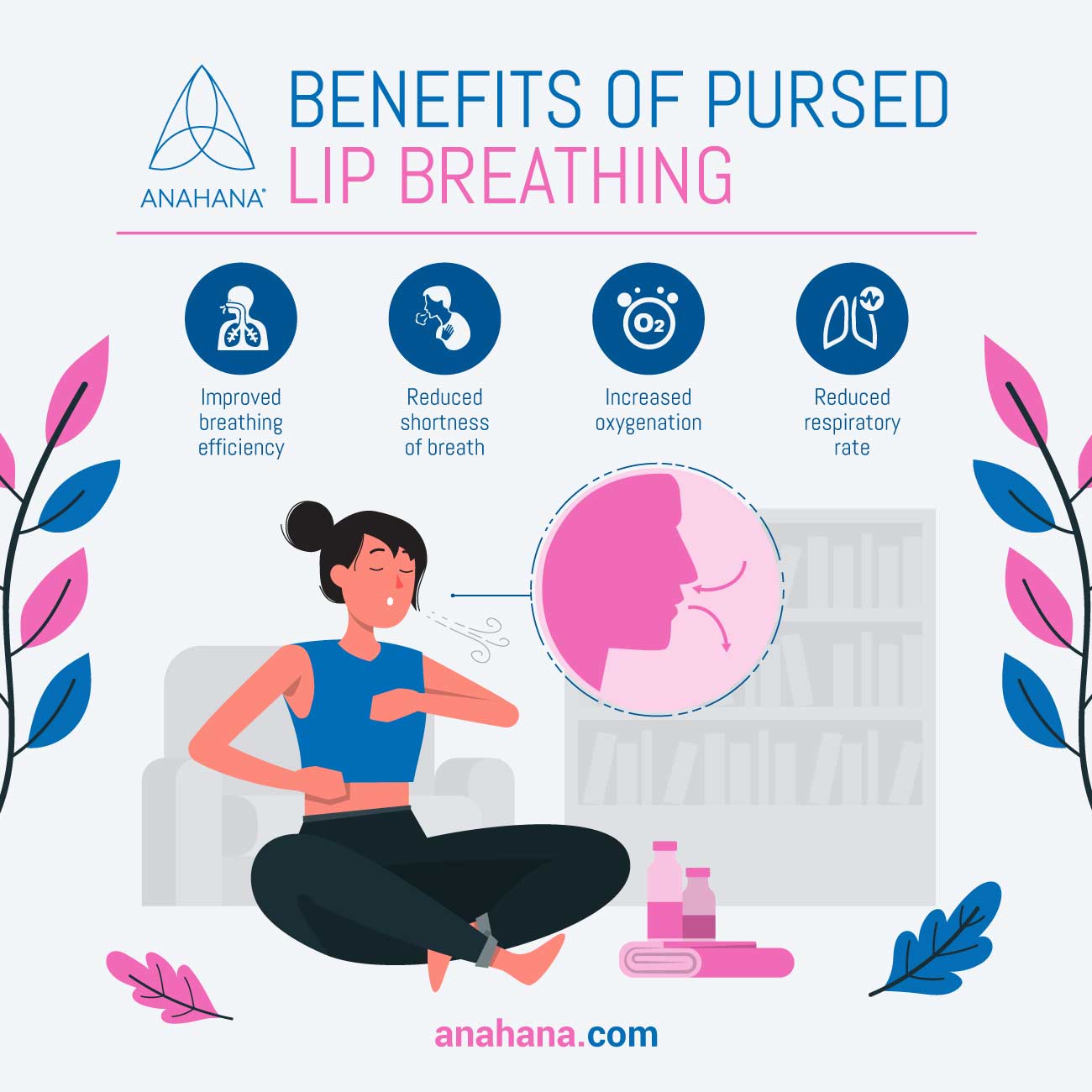
Table of Contents
Embark on a transformative journey with the power of breathing techniques at your fingertips. Dive into these time-honored practices to not only diminish stress but also elevate your life's quality to unprecedented heights.
Breathing Techniques Explained
Breathing exercises are techniques designed to promote relaxation, reduce stress, and improve physical health and overall well-being by encouraging controlled breaths.
Breathing exercises help to teach people how to breathe deeply, increase their breath focus, and counteract the body’s stress response.
Typically, breathing exercises focus on using the diaphragm, a large muscle located beneath the lungs, to maximize the amount of oxygen entering the body and to regulate breathing most efficiently.
These practices can range from simple deep breaths to more complex methods like alternate nostril breathing, all aimed at achieving these benefits.
Benefits of Deep Breathing Exercises
Breathing techniques offer numerous benefits, including stress reduction, improved focus, and enhanced emotional regulation.
Relaxation and Stress Relief
Deep breath exercises can be a valuable tool to relieve stress, calm the mind, and increase overall relaxation. Breathing techniques can help with increasing relaxation in many ways, including:
- Heart rate: Taking slow, deep breaths lowers one's heart rate and improves oxygen delivery to the body.
- Stress hormone reduction: Deep breathing exercises can reduce stress-related hormones such as cortisol.
- Muscle relaxation: Deep breathing can relax tense muscles.
- Mind-body connection: Breathing techniques can improve the mind-body connection, allowing one to control their stress response better.
Breathing techniques can be a stress release valve, reducing anxiety and promoting mental clarity.
Sleeping
Deep breathing exercises have also proven to be beneficial for sleep.
Individuals with chronic sleep issues like insomnia can benefit from incorporating slow, deep breathing techniques before bedtime to relax the mind and the body.
Emotional Well-Being
Breathing techniques can help with emotional well-being by providing tools for emotional regulation.
Deep breathing can help calm the mind and the body to create more emotional balance and resilience to stress.
Breathing techniques can also be a helpful tool for building self-awareness and improving one’s connection to one's inner thoughts and feelings.
Physical Health
Breathing techniques can provide many physical health benefits, including:
- Improved functioning of the respiratory system
- Improved cardiovascular health, including reducing blood pressure
- Improved posture and core engagement
- Improved physical endurance
Weight Loss
Studies indicate a positive correlation between daily stressors and weight gain. Increased stress levels can lead to excess weight due to heightened cortisol and adrenaline release.
Balanced stress levels naturally influence eating habits and physical activity. Breathing exercises offer effective weight management without resorting to fad diets or gimmicks, as they are excellent tools for stress management.
Types of Breathing Exercises
Breathing exercises encompass many practices, from quick routines to intricate meditations. There's no 'one-size-fits-all' approach and no strict rules on what breathing exercise one chooses.
Breathing exercises are a tool that one can harness in various ways to achieve many positive outcomes.
There are many types of specialized breathing exercises, including:
- Pranayama Breathing
- Wim Hof Breathing
- Kapalabhati
- Buteyko Breathing
- Mindful breathing
- Ujjayi breathing
Here are some of the most common breathing techniques:
Square Breathing or Box Breathing
The Square Breathing exercise is a straightforward breathing method that follows a “square” framework.
To perform square breathing, one would:
- Breath in for a count of four
- Hold your breath to the count of four,
- Breathe out to the count of four, hold to the count of four
This breathing exercise can quickly regulate one's breathing pattern, promote breathing deeply, and relieve acute stress.
4-7-8 Breathing
The 4-7-8 technique is a simple breathing technique developed by Dr. Andrew Weil.
It involves inhaling quietly through the nose for a count of 4, holding the breath for a count of 7, and then exhaling audibly through the mouth for a count of 8.
4-7-8 deep breathing exercise is one of the relaxation techniques to reduce stress and calm the mind.
Diaphragmatic Breathing
Diaphragmatic breathing, also known as deep belly breathing and abdominal breathing, is the opposite of chest breathing and is generally considered a more efficient and effective way to breathe.
It typically involves placing a hand on your belly to feel its rise as you inhale deeply.
This technique shifts the focus of the breath away from the upper chest and promotes deep inhales and breath control. Diaphragmatic breathing is the opposite of chest breathing and is a more efficient way to breathe.
Engaging the diaphragm triggers the relaxation response, reducing stress and promoting a sense of calm and well-being.
Alternate Nostril Breathing
Alternate nostril breathing, or Nadi Shodhana Pranayama, is a yogic technique involving breathing through one nostril at a time while blocking the other.
This practice is believed to balance energy, reduce stress, and enhance mental clarity.
It involves inhaling and exhaling through alternate nostrils in a rhythmic pattern, promoting a sense of calm and balance in the mind and body.
Pursed Lip Breathing

Pursed lip breathing is a simple breathing method that focuses on exhaling through pursed lips. It can help relieve shortness of breath and shallow breathing.
Pursed lip breathing is a technique commonly used with people with difficulty breathing, particularly those with chronic obstructive pulmonary disease (COPD) or asthma.
Inhale slowly to a count of two. Then, purse your lips as if you were going to whistle and exhale slowly for a count of four.
Lion’s Breath
Lion's breath is a breathing technique that involves a forceful exhalation through an open mouth while sticking out the tongue and widening the eyes. While exhaling one opens their mouth wide, sticking out their tongue they say the word “HA”.
This practice can help to release tension, reduce stress, and promote emotional catharsis. People often use lions breath as a stress-relief exercise and let go of built-up tension and emotions.
Sitali Breath
Sitali breath, is a breathing exercise that involves inhaling through a rolled tongue or the gap between one's upper and lower teeth, creating a cooling sensation.
As the individual exhales through the nose, this practice is believed to have the potential to cool the body, calm the mind, and alleviate stress and heat-related discomfort.
Stali breath serves as an effective tool for reducing body temperature, promoting relaxation, and enhancing overall well-being through this controlled breathing technique.
References
Self-Regulation of Breathing as an Adjunctive Treatment of Insomnia - PMC
10 Breathing Exercises to Try: For Stress, Training & Lung Capacity
Diaphragmatic Breathing Exercises & Benefits
Deep breathing exercise at work: Potential applications and impact
Disclaimer
The contents of this article are provided for informational purposes only and are not intended to substitute for professional medical advice, diagnosis, or treatment. It is always recommended to consult with a qualified healthcare provider before making any health-related changes or if you have any questions or concerns about your health. Anahana is not liable for any errors, omissions, or consequences that may occur from using the information provided.

By: Clint Johnson
Clint is the driving force and founder of Anahana. Clint teaches Yoga, Pilates, mindful breathing, and meditation, catering to a global community of students and teachers.
